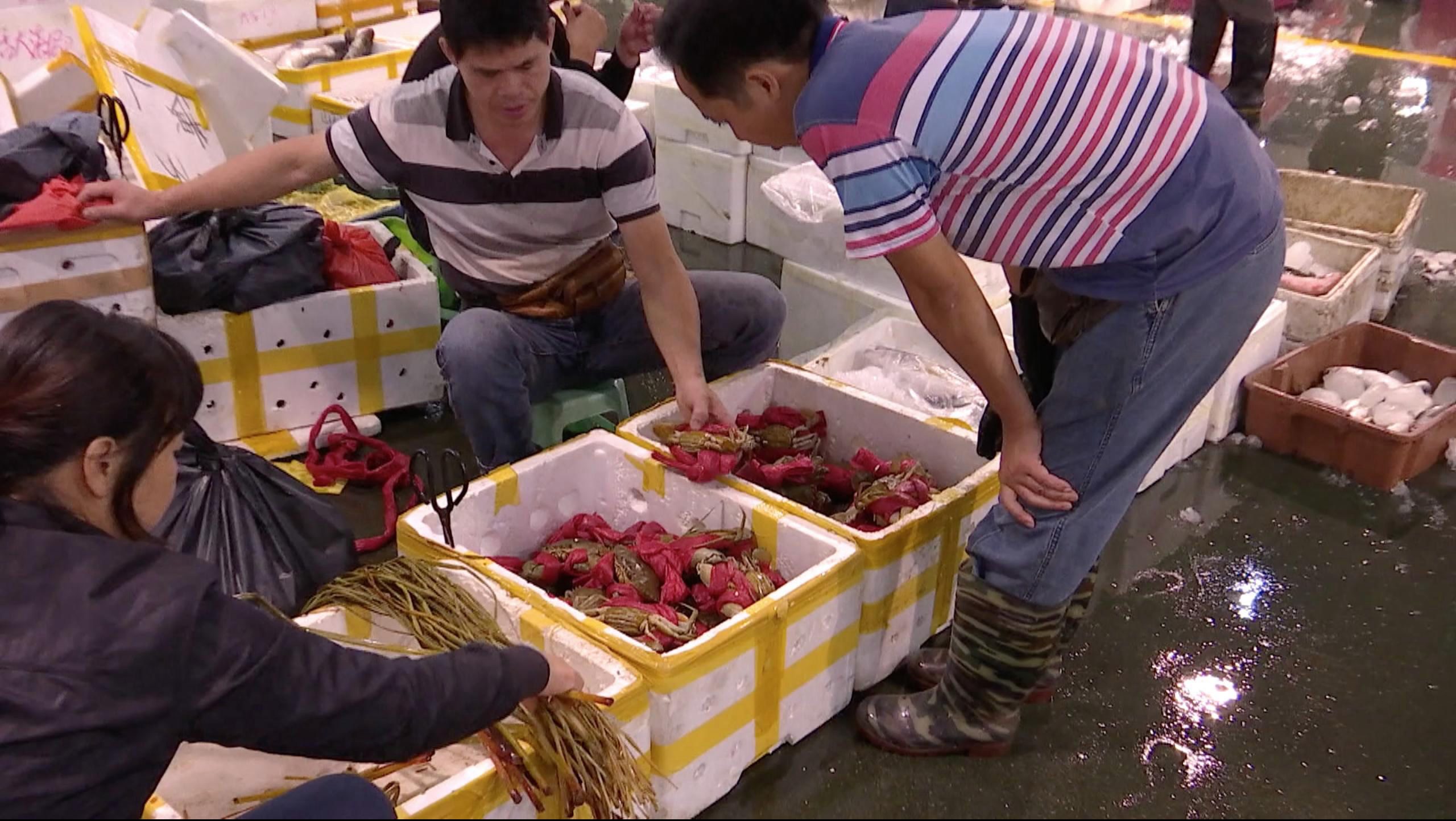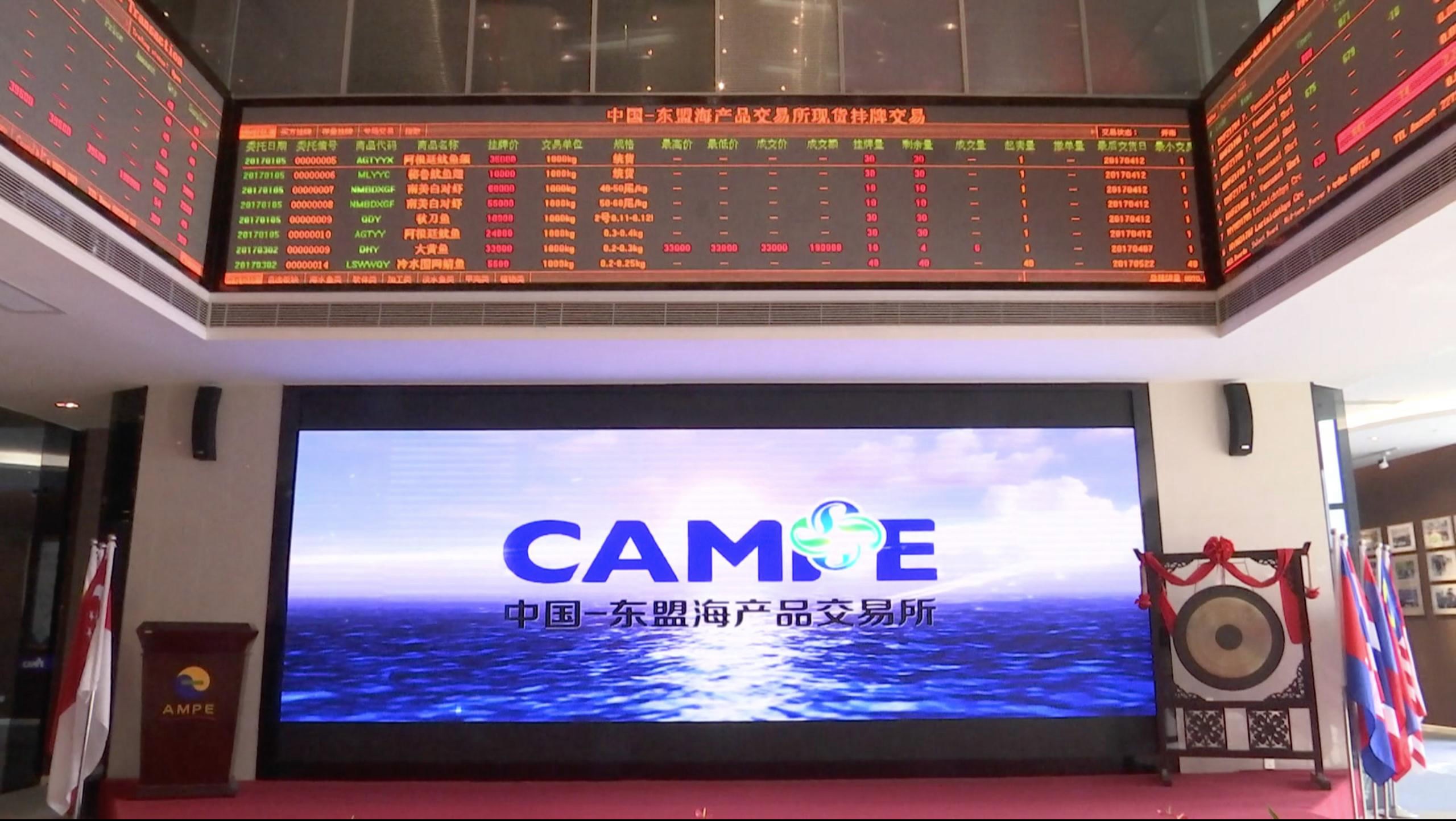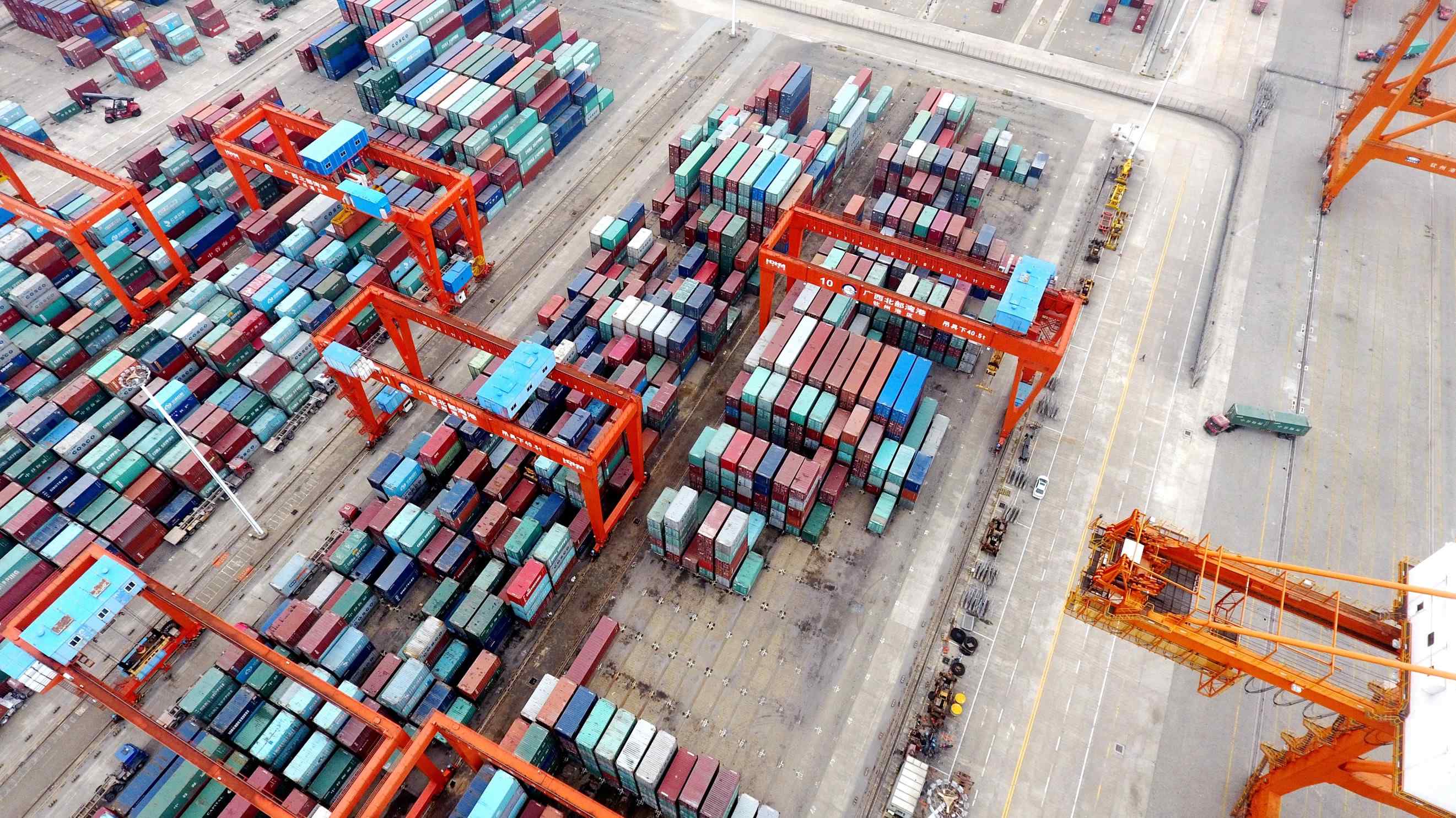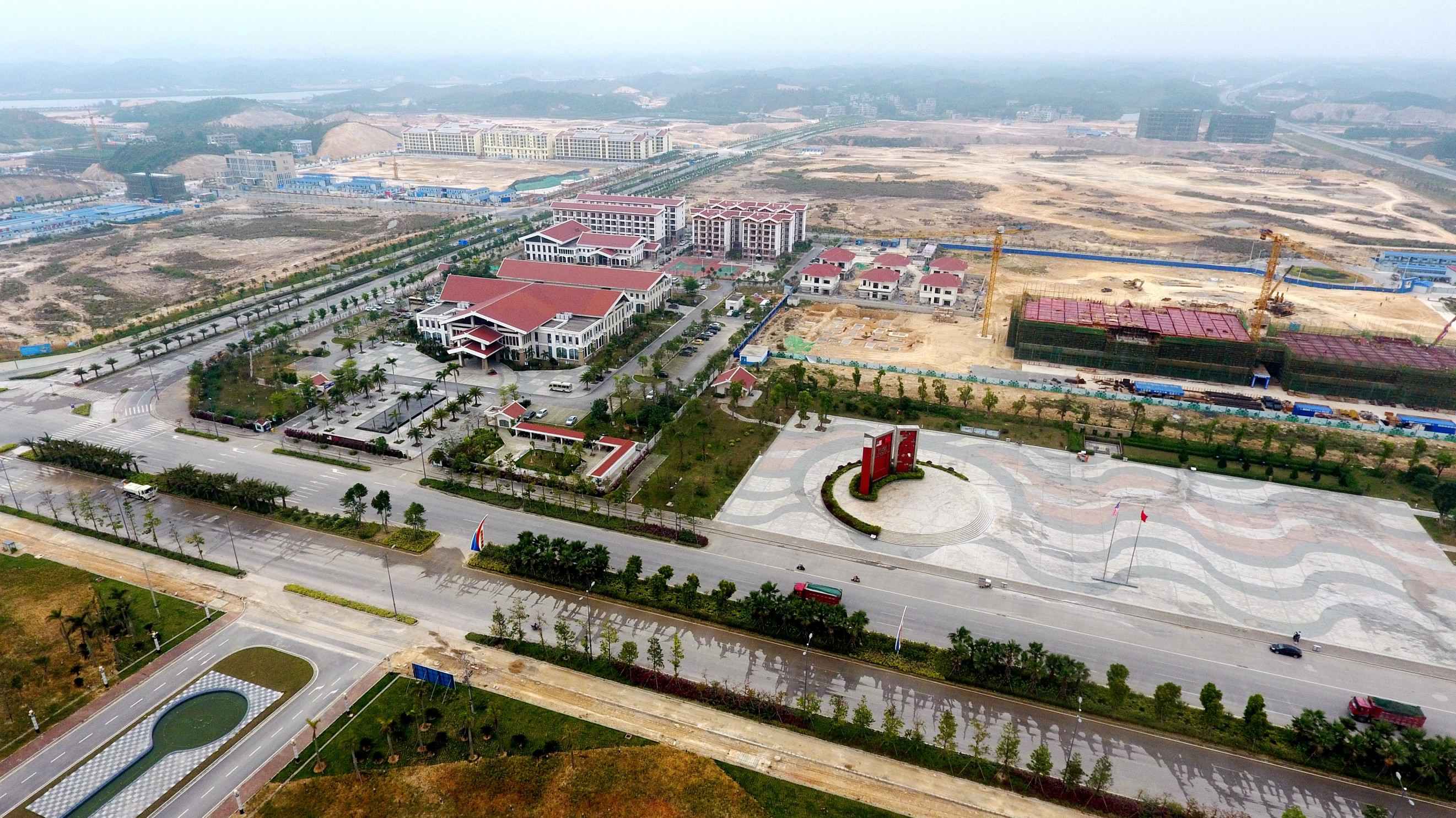By CGTN's Yang Chengxi
Two million tons of fish, shrimps and crabs changed hands in a market in Fuzhou, east China's Fujian Province last year between traders from China and ASEAN countries.

A marine product market in Fuzhou. / CGTN photo
That involves 30 billion yuan worth of transactions, done at the China-ASEAN Marine Product Exchange.
Established in 2015, the exchange allows for real time pricing and settlements, making spot trading more efficient.
The transactions are all dealt in the Chinese yuan to reduce exchange rate risks, which also has a positive side effect for the currency.

China-ASEAN Marine Product Exchange. / CGTN photo
“Both pricing and settlements are dealt in the yuan. Both buyers and sellers, no matter what country they come from, need to hold yuan to trade. So this will increase the use of the Chinese currency internationally”, said Xue Yongfu, vice president of the exchange.
Trade relations between China and ASEAN countries go far beyond marine products. In the southern end of China’s Guangxi Zhuang Autonomous Region is the bonded port of Qinzhou.

The Qinzhou Free Trade Port. / CGTN photo
Through Qinzhou, China is exporting farming machinery and equipment to Southeast Asia, and importing various goods, from raw materials to passenger cars.
1.4 million containers passed through Qinzhou port in 2016, up 60 percent year-on-year.
“Under the Belt and Road Initiative, we are speeding up the development of this port,” said He Zhen, the Qinzhou bonded port's deputy director.
"We are improving shipping to railway connectivity and streamlining customs procedures. At the same time, we are building industrial zones around the port," He added.
What He Zhen is referring to is the nearby China-Malaysia Qinzhou Industrial Park, jointly set up by both countries' governments.
The zone’s president Ong Chong Yi, an ex-Malaysian trade official, hopes his country’s palm oil and rubber makers could have a presence in the park in the future, which promises benefits such as tax breaks and leasehold discounts.
“When China requires bigger orders, they can’t supply because the production in Malaysia is so small for the Chinese market," said Ong.
"So what we can do through this platform we hope that Malaysian companies can come into China to set up plants to work with Chinese companies to explore bigger markets in China,” he added.

The China-Malaysia Qinzhou Industrial Park in Qinzhou. / CGTN photo
The park has a counterpart in Malaysia - the Malaysia-China Kuantan Industrial Park. It is what officials call a “Two Countries, Twin Parks” cooperation mode.
“Before this, in Malaysia no one knows about Qinzhou. No one would ever think about investing in Qinzhou. Also in China, no one knows about Kuantan," said Ong.
"Through this bilateral cooperation on this two-country twin park, more and more Malaysians and Chinese now know more about these two places,” he added.
Officials hope this cooperation model would be a pioneering step on the way to achieving a China-ASEAN Free Trade Area in the future.
2148km










